Music is the bones of a place. Lyrics can reveal just as much as any history book in terms of the psyche of the people, current state of things and reflect on how things once were. And, man, does Argentina have a story to sing about.
The Real Argentina takes a look at the roots of the holy trinity of rock nacional, tango and folclore to get under Argentina’s musical skin whilst guiding you to the gigs you should be getting excited about now.
In the second of three music blogs, The Real Argentina’s guide to Tango…
Tango’s lyrics of nostalgia, passion and heartbreak are a powerful testament to the countries multicultural history. It’s a serious business for many tangueros who dedicate the twilight hours to the scene of late night milongas, dancing to the wee small hours until it’s time for desayuno (breakfast) and a snooze, before doing it all over again. So entwined is the genre with Argentine culture that much of the old tango slang or lunfardo is still in popular use today and scratchy tango tunes play over the airwaves 24/7 on dedicated radio stations. 1930s heart throb and poster boy Carlos Gardel is still regarded as the best tango singer, so don’t be surprised to hear his canciones (songs) seeping out onto the streets from taxi driver’s windows and señoras clutching stereos on doorsteps. So much more than a sexy stereotype, tango illustrates the Argentine psyche and is every bit the embodiment of a way of being.
TAP IN TO TANGO’S ORIGINS…
A mish-mash melting pot of influences, tango’s DNA would baffle scientists. Thankfully The Real Argentina’s here to give you the nuggets of knowledge you need to get by…
- Cuban habanera, Argentine milonga and candombe make up the roots of tango dance.
- African communities and rhythms played their part in molding the genre, whilst waves of European immigrants brought new techniques and instruments such as the German bandoneón to Buenos Aires, now the undisputed sound of tango orquestas.
- Tango captivates Parisian audiences by 1912 in a widespread European dance craze.
- As worldwide high society caught the tango bug it lost its lower class associations, moving from the seedier side of town to elegant Buenos Aires ballrooms. It used to be a popular past time between thugs and gangsters whilst waiting their turn in brothels.
- The intricate dance moves originally evolved between men in a show of sexuality and aggressiveness. Women were outnumbered by more than 100,000 hombres in 1914, so it was a case of, ‘dance with the one you’re with.’ Most likely to be a man given the circumstances!
From its BA brothel beginnings to Paris ballrooms and back again, tango has never been static. Here’s a brief, and in no way exhaustive, rundown of the good and the great from the tango hall of fame to check out before getting enganchado (hooked on) the modern orquestas who are really rocking tango to their own beat.
FIRST GENERATION, ‘LA GUARDIA VIEJA’
Formally a folk singer, Carlos Gardel, recorded his first tango Mi Noche Triste in 1917 giving tango its indelible heartbreak stamp. Of French Argentine origin, Gardel’s baritone timbre, coupled with dramatic phrasing earned him many apodos (nicknames), but none more fitting than ‘The King of Tango.’ Leaving a legacy of three-minute masterpieces with long-time collaborator Alfredo Le Pera, Gardel’s untimely death in a plane crash at the height of his fame ensured his fate as the archetypal tragic hero.
Despite tango’s rising popularity, nothing could save it from the malaise of 1929’s Great Depression. It took a further nose-dive after Hipolito Yrigoyen’s government was overthrown a year later, though others, like orquesta maestro, Juan D’Arienzo, put it down to idolized singers dominating the scene. This had literally pushed musicians into the background, so when a drought of popular vocalists came, tango was left adrift, unsure of its identity.
For D’Arienzo, the voice was just another instrument. His mission to get tango’s heart beating to the 2×4 again came down to one thing, ‘…An orchestra ought to have, above all, life. That is why mine lasted more than fifty years,’ he boasted. And the so-called Rey del Compás (Rhythm King) lived up to his moniker, introducing a tougher, swinging almost nervous beat. Young people loved its vibrancy and alegria (happiness) and orquestas were centre stage again. The Rey had recorded a record 150 LPs by the time he died aged 76 .
TANGO’S GOLDEN ERA
1950’s: Another era, another recession. Economic misfortune coupled with the dictatorship’s banning of public gatherings meant tango took another hit. Thankfully its fortunes were reversed under the government of Juan Peron 1946 -55, also a friend of maestro Juan D’Arienzo, as tango became widely fashionable and a matter of national pride. The ‘golden era’ was finally here.
As a 10 year old, Anibal Troilo convinced his mother to buy him a bandoneón. He played that same instrument for most of his career, growing into his signature style of playing and posture: slightly hunched, jowls hanging. The maestro knew how to work an orquesta and was an inspired composer. Troilo made the bandoneón ‘talk’. Playing with the gran pianist Osvaldo Pugliese and Juan D’Arienzo, it was obvious that good things lay ahead and he later formed his own group which recorded up until 1971.
Bandoneonist Astor Piazzolla sat at the helm of the Nuevo tango movement. In his youth he played and composed for Troilo but when he dared to go it alone down the experimental brick road with innovations in rhythm, timbre and harmony he came under attack from trad- tango circles who dubbed him, ‘the tango murderer,’ and refused to accept his compositions as tango at all. In later years he was exonerated by rock musicians and intellectuals alike.
The last of the great tango composers and musicians, Osvaldo Pugliese never mixed music with his communist tendencies but that didn’t stop Peron’s first government (1946-1955) throwing him in to prison on four occasions and history repeated itself under the military regime. As adept at composing as conducting, he was also a virtuoso pianist. His deeply intense compositions reflected his character and in spite of being banned and locked up, his band played on with a single red carnation lain on the piano to symbolise his presence. Renowned for sharing his substantial earnings equally among his band members, his co-operative ethic spurred a similar consciousness in contemporary orquestas, most notably La Orquesta Típica Fernández Fierro (see below). After nearly half a centuries work he was given the unprecedented honour of playing at Buenos Aires’ world famous Teatro Colon to celebrate his 80th birthday.
GET YOUR CONTEMPORARY TANGO ON…
A good measure of melancholy soaked heartbreak, a dash of poverty, mishaps and conquests, topped up with failed ambitions, infidelity and drug abuse have been the standard cocktail of tango’s lyrics since its birth. Some things never change. There’s always been a sucia (dirtier) side to tango and you don’t have to look too far in Buenos Aires to find it. Eyeball younger dancers swiveling around the floor in Converse and leggings at modern milongas, who are often accompanied by fierce and hungry orquestas reinterpreting tango for a new generation. There’s a rich tango cannon to pilfer, but new generations are doing it their way. Tango’s latest incarnations bring rock and electronica to the 2×4 beat. Unmarked doors and seemingly disused spaces add further to the more underground feel these days. A world away from the ‘dinner and a show’ tourist traps, you never quite know where your next tango step will take you on the independent circuit.
THE REAL ARGENTINA LOVES…
Formed in the mid 90s, La Chicana’s tack is reviving the essence of 1920’s tango lyrics and rhythms, being of the opinion these were the ace rebellious teenage years before tango grew up into its later orchestral form that popularised it around the world in the 40’s. Their rougher edge loses nothing in precision though, they just favour a bit of rowdiness over refinement. Penning their own tracks alongside classics has seen them play around the world, from Brazil to Senegal and these cultures informed their second album, ‘Un giro extraño,’ ‘A Strange Turn, plays with these African and Brazilian milongas alongside Argentine folclore traditions.
Melingo is like a modern day conjurer with vaudeville in his DNA. You’d be forgiven for thinking someone had slipped a bit of absinth in your drink (and his) as he reels in the audience from under his fedora hat. You can’t help but fall under his wide-eyed spell. Happily walking the tightrope of anarchy, he often ends up lying prostrate, bare footed on the floor slapping rhythms to the tango gods of old. Armed with his clarinet and a bass grizzly voice, Daniel Multi-instrumentalist Melingo and his crack ensemble of musicians are twisting tango’s melons. Songs such as ‘narigón,’ translated as ‘big nose’ refer to his former imbibing habits in rockier days when he played in Argentine rock nacional band Los Abuelos de la Nada and with legendary Argi icon Charly Garcia in Las Ligas, later founding The Twists. That rock heritage infuses his rebellious streaked tango and now almost two decades on since he made the switch, he’s been honored with the 2015 Konex Award as one of the best Argentine tango singers of the decade.
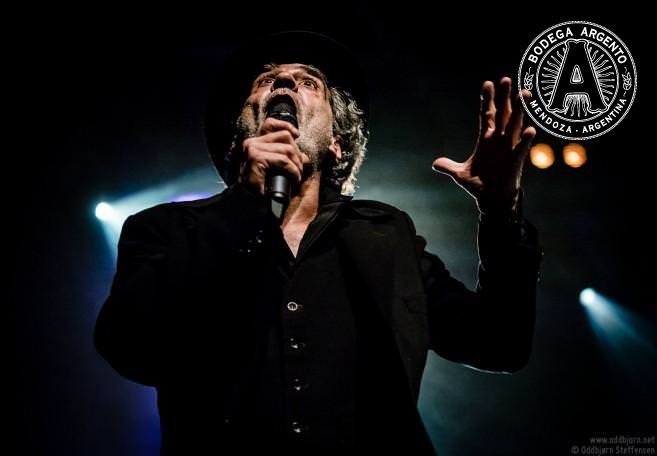
Trendsetting cooperative Orquesta Tipica Fernanzez Fierro are disciples from the Osvaldo Pugliesse school of tango. Searing strings and roaring bandoneóns blare out under strobe lights at their warehouse space where they’ve been rocking out audiences since 2001. Their dark, intense and decibel testing live shows have a filmic essence to them like walking through a wonky Tim Burton soundtrack. Rock and tango are intrinsically the same genre for this deft tribe of musicians and rock nacional guitarist Tito Fargo of Patricio Rey y sus Redonditos de Ricota fame, produced their most recent album Tan Idiotas Como Siempre. Gigging worldwide topping line-ups with Lou Reed to Rufus Wainwright and playing festivals like Womad and Lollapalooza, they are a tango force to be reckoned with.
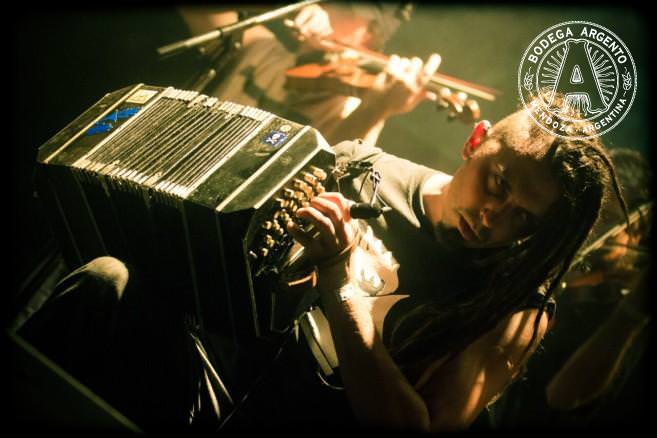
Rascasuelos‘ orquesta is fronted by Hector Limon who had his own rock band for 20 years. Like rock, the group sees tango as ‘both marginal, urban and persecuted.’ While flexing their creative tango muscle under this moniker, Limon & Co curiously perform under the name Rascacielos, their alter ego, where they faithfully interpret the classics.
Celebrating 10 years of doing tango their way, Orquesta Tipica El Afronte play to a packed floor of milongueros at their own weekly milongas, La Bendita (blessed) and Maldita (Damned) in San Telmo. Captivating mostly young audiences across the floorboards, with a repertoire of classics and self penned tangos, they too perform with Pugliese’s fierce forma de ser (way of being). Stirring to the core, the dance floor literally trembles underfoot as dancers and orquesta come together at this tango church with expressive vocalist Marco Bellini standing rock star-esque at the mic.
La Vidu More fiesta vibe than a typical orquesta, the 14 strong family clan sees doyen Gabriel Bartolomei donning the director, composer and violinist hats with his two ridiculously talented young sons in tow. Their sound thunders along to the sound of rock nacional and their repertoire includes a cover of Redonditos de Ricotta’s, ‘Blues de Artilleria’. A tango cover of a rock song? The genius undertaking belies the fact that it wasn’t originally written as a tango and underpins this rock/tango reciprocity of these not too distant genre siblings.
TANGO ELECTRONICA
Electronic tango groups have taken sway over the last decade, helped along by huge cross over successes like Gotan Project, it roused a fusion and proliferation of groups in a similar vein. The new label of ‘electrotango,’ acted as a warning to traditionalists to prepare their ears for the unexpected.
The line-up of Argentine and Uruguayan musicians of Bajofondo have been at the vanguard of the electronic trend since their early forays over a decade ago. Sampling vinyl copies of greats like Astor Piazzolla and Juan D’Arienzo as well as popular Uruguayan artist Jamie Roos, they galvanized a fusion of hip-hop with tango and milonga and tote Melingo on their production credits. With two Latin Grammy’s under their belts, they earned another one to dust off recently at the Konex Awards when they were named as one of the five best Argentine pop groups of the last decade.
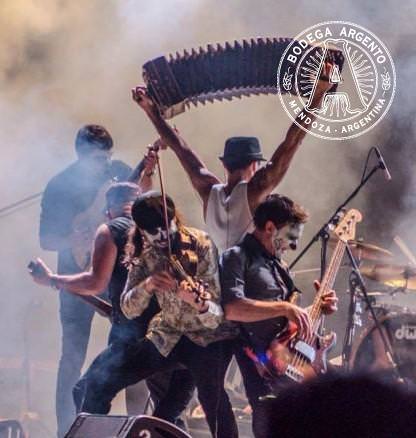
Otros Aires formed in Spain as a Sound System and joined forces with Argentine musicians to mix tango cannon masters like Gardel and D’Arienzo with electronic beats and samples. Their rapid success quickly took them back to European tour dates and they have since toured extensively in North and South America, there’s even a documentary. Their third studio album ‘Otros Aires Tricota’ is acoustically hinged between tradition and innovation, recorded in collaboration with la orquesta típica Erica Di Salvo, it re and then deconstructs the legacy of tango heritage.
Narco Tango took influences from trip hop bands like Massive Attack and Portishead, earning them stripes and nominations from the critics at the Latin Grammy’s and Gardel Awards for their third album ‘Narcotango en Vivo’.
Covering New Order’s Blue Monday isn’t even off limits for Tanghetto. The groups’ version got airplay on MTV Latin America gaining them leverage and notoriety in the mainstream. Founding member Max Masri and later Diego S. Velázquez cooked up the composition of their debut 2004 album ‘Emigrante (electrotango)’, under the economic crisis Argentina was facing at the time and the duo are credited with coining the term ‘electrotango,’ as one of its first exponents. Entertaining over 9000 fans at London’s O2 Arena has to be a career highlight and coupled with the kudos of foreign tours lasting a whopping two years, they are surprisingly prolific. The band’s last album, ‘Hybrid Tango II’ was released in June 2014.
Sonja D'cruze
Latest posts by Sonja D'cruze (see all)
- BUENOS AIRES’ MEATY FEAST CHAMPIONSHIP - August 29, 2017
- Get the grapes in! Mendoza’s Vendimia Harvest Festival - May 15, 2017
- ARGENTINA’S SILVER LINING - October 6, 2016

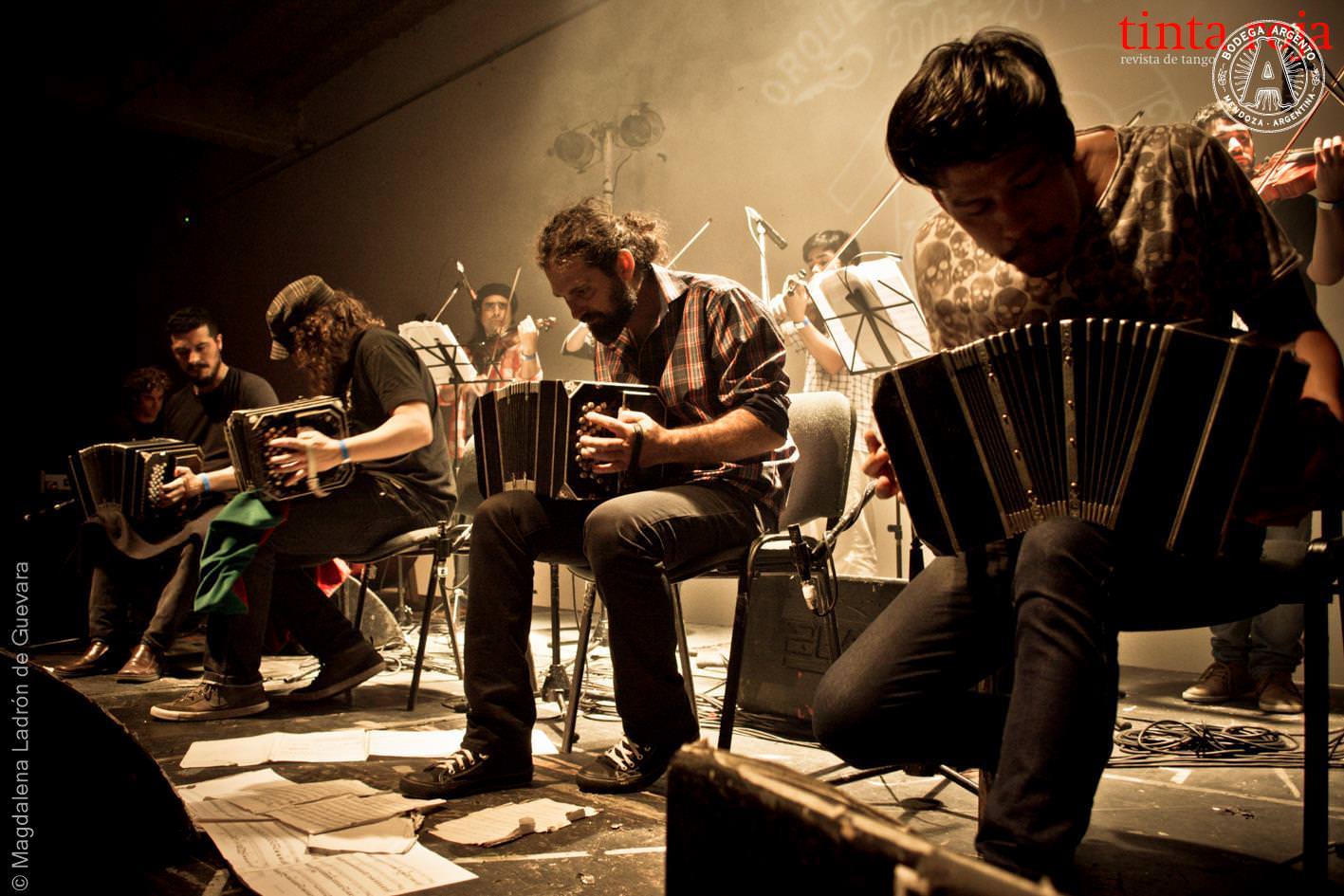
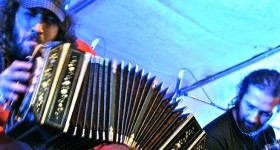 Independent Tango Music in Buenos Aires
Independent Tango Music in Buenos Aires 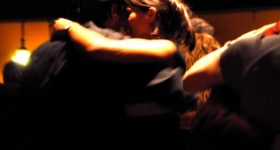 The Lure of Tango in Argentina
The Lure of Tango in Argentina 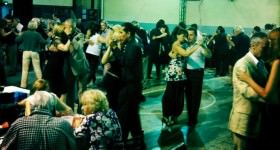 The Real Tango Experience in Argentina
The Real Tango Experience in Argentina 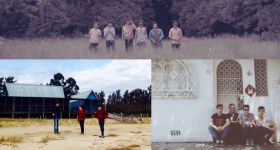 Argentinian underground bands you should be listening to
Argentinian underground bands you should be listening to 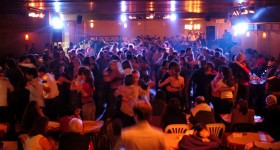 Tango in Buenos Aires: The Top 10 Milongas
Tango in Buenos Aires: The Top 10 Milongas  Argentinian Music: A Biography of (genius) Gustavo Santaolalla
Argentinian Music: A Biography of (genius) Gustavo Santaolalla 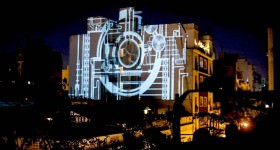 AL VER VERÁS – A VERY BUENOS AIRES ART INTERVENTION
AL VER VERÁS – A VERY BUENOS AIRES ART INTERVENTION  Gaby Kerpel Beats to a Different Drum
Gaby Kerpel Beats to a Different Drum 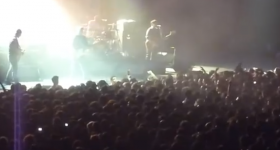 The Best Argentine Music Venues in Buenos Aires
The Best Argentine Music Venues in Buenos Aires 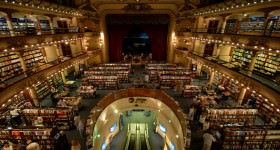 The five best bookshops in Buenos Aires
The five best bookshops in Buenos Aires 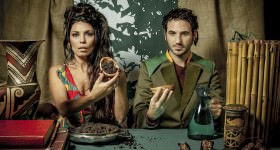 FOLCLORE: FROM GAUCHOS TO ELECTRO BEATS
FOLCLORE: FROM GAUCHOS TO ELECTRO BEATS 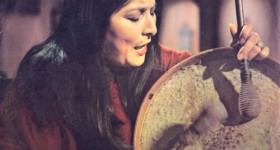 Folklorico – Traditional Argentine Music
Folklorico – Traditional Argentine Music